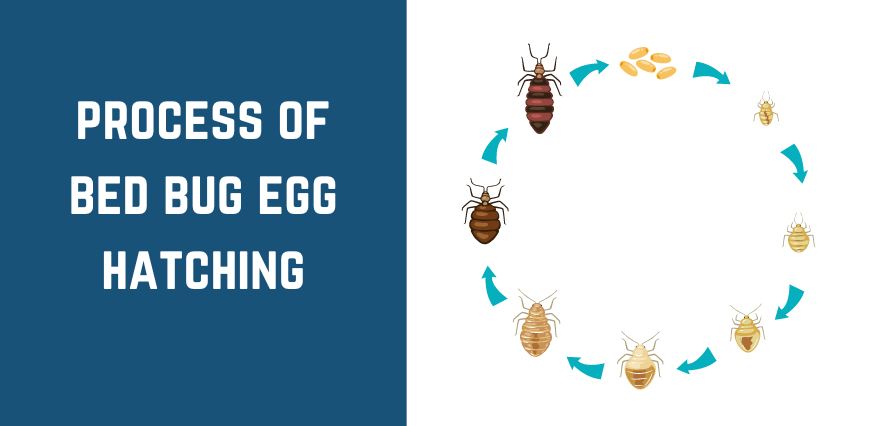
How long it takes to hatch eggs for bed bugs
The life cycle of bed bugs is mysterious and fascinating. They go through several stages of growth, from small eggs to biting nymphs to adults. For anyone who finds the idea of a bed bug infestation frightening, when and how long it takes to hatch eggs for bed bugs is essential.
To provide helpful insights into proactive management, we shall examine the elements influencing the hatching length of bed bug eggs in this article.
What is the process of bed bug egg hatching?

- Laying: A female bed bug uses a material similar to glue to attach her one to five eggs to concealed cracks each day.
- Development: The nymph goes through several phases inside the egg, which are indicated by a darker “eye spot” that appears after five days.
- Hatching: The nymph appears from the egg after 7–10 days, like a transparent, scaled-down version of the adult.
- Feeding: To survive and start the molting process, the recently hatched nymph needs to consume blood within three days.
The quick hatching period of bed bug eggs is one factor in the infestations’ exponential expansion. Throughout her life, a single female bed bug can lay hundreds of eggs, the color of bed bug eggs varies from pearl white to pale yellow, each of which has a week to hatch.
Due to their fast growth, you must act quickly if you find eggs because waiting around could cause these hardy pests to spread more quickly.
What are the requirements for bed bug eggs to hatch?
- The role of temperature: Lower temperatures, between 50°F and 60°F, might cause hatching to take noticeably longer, sometimes double or even quadruple the usual time. On the other hand, temperatures above 80°F may cause hatching to occur a little sooner, complicating the chronology of the infestation.
- Humidity Is Important: Although bed bugs may survive in a wide range of humidity conditions, egg development is best in moderate humidity ranges of 50–70%. Both extremes can have a subtle effect on hatching times, which adds to the complex riddle of bed bug proliferation.
- Feast or Famine: The timing of hatching is greatly influenced by the availability of a blood meal. It takes three days for newly hatched nymphs to survive and begin molting without a blood meal. It is possible to postpone development until feeding takes place if a suitable host is not easily found.
You may also like:
FAQs
What are the stages in the hatching process of bed bug eggs?
How does a female bed bug lay eggs, and where are they typically placed?
What is the feeding requirement for a newly hatched bed bug nymph?
How does the quick hatching period contribute to the rapid expansion of bed bug infestations?
What factors influence the time it takes for bed bug eggs to hatch?
Why is it crucial to act quickly upon discovering bed bug eggs?
How does knowledge of the hatching process empower homeowners in the fight against bed bug infestations?
Conclusion
Knowing the nuances of egg hatching is a vital tool in the fight against bed bug infestations. The timetable highlights the critical need for proactive management and is impacted by temperature, humidity, and the availability of a blood meal.
It is crucial to respond quickly after finding bed bug eggs to prevent the rapid hatching cascade and reduce the likelihood of a broad infestation. With the right information, homeowners can successfully overcome the difficulties presented by bed bug eggs and ensure a prompt and efficient response to safeguard their homes from these invasive pests.


